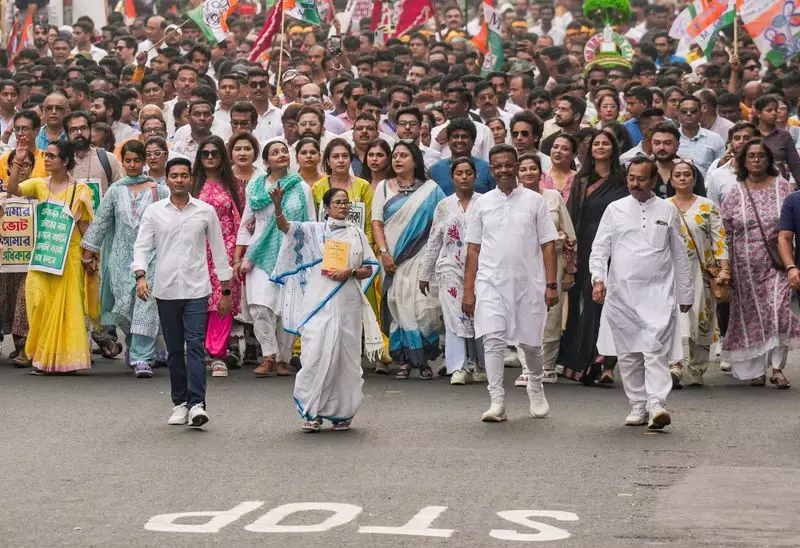
West Bengal Chief Minister Mamata Banerjee has escalated her confrontation with the central government by launching a massive two-day sit-in demonstration in Kolkata, accusing the BJP-led administration of imposing a "financial blockade" against the state.
The Heart of the Protest
The protest, which began on Monday at Ambedkar's statue in the bustling Esplanade area of central Kolkata, represents one of the most significant political demonstrations in recent state history. Banerjee, dressed in her characteristic white cotton sari with a blue border, arrived at the protest site accompanied by senior leaders of her Trinamool Congress party.
"This is not just my protest, this is the protest of 10 crore people of Bengal," declared the fiery leader, addressing a gathering of party workers and supporters. "The Centre is trying to strangulate Bengal financially by withholding funds that are rightfully ours."
Massive Financial Implications
The Chief Minister detailed the financial impact, claiming the central government has withheld approximately Rs 1.15 lakh crore that rightfully belongs to West Bengal. This staggering amount includes:
- Rs 15,000 crore under the Mahatma Gandhi National Rural Employment Guarantee Act (MGNREGA)
- Rs 7,000 crore for housing schemes
- Rs 8,200 crore for the National Health Mission
- Various other central scheme allocations
"How can they stop funds for 100 days' work? This is affecting the poorest of the poor, the laborers who depend on this money for their survival," Banerjee questioned during her emotional address.
Political Theater and Strategic Timing
The protest comes at a crucial political juncture, with national elections looming on the horizon. Political analysts see this as Banerjee's strategic move to position herself as the champion of state rights against what she calls the Centre's "step-motherly treatment."
The demonstration has drawn significant attention, with thousands of TMC supporters gathering at the protest site, waving party flags and shouting slogans against the central government. The atmosphere remains charged but peaceful, with elaborate security arrangements in place.
Broader Federal Implications
This confrontation transcends state politics, touching upon the very fabric of Indian federalism. Banerjee positioned her protest as a fight for the rights of all non-BJP ruled states, alleging a pattern of financial discrimination.
"This is not just about Bengal. This is about the future of cooperative federalism in India," she asserted. "If they can do this to Bengal today, they can do it to any opposition-ruled state tomorrow."
The protest site has been transformed into a political theater, with banners and placards highlighting the alleged financial injustice. Senior TMC leaders, including ministers and MPs, are taking turns to address the gathering, keeping the momentum alive through the two-day demonstration.
What's Next in the Standoff?
As the protest continues, all eyes are on how the central government will respond to this very public challenge. The financial dispute between West Bengal and the Centre has been simmering for months, but Banerjee's decision to take it to the streets marks a significant escalation.
The outcome of this confrontation could have far-reaching implications for Centre-state relations and set precedents for how financial disputes between the Union government and states are resolved in the future.





